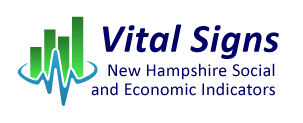An Overview of LEED (print version ![]() )
)
Sustainability is the effort to maintain and secure continuous, sufficient resources; increasingly this concept is working its way into daily life. The stakeholders of many building construction projects are finding long term value in going green.
The U.S. Green Building Council (USGBC) oversees the green building movement, and had projected the green building market in the United States to more than double over five years, from $43 billion in 2008 to $120 billion in 2013. In 2005, green building accounted for just two percent of non-residential new construction and is expected to reach nearly 25 percent of new construction in 2013.1
The USGBC developed LEED, Leadership in Energy and Environmental Design, to standardize outcomes of green building projects. A LEED certified building offers good marketing opportunities to owners, including re-sale, community standing, government incentives, as well as the projected energy cost savings over the long term. LEED provides third-party certification for green building projects utilizing a point system that addresses the entire lifecycle of the building. In 15 years, this system has become the benchmark for determining how “green” a building project is.
 Points toward certification are earned in five general categories with numerous others added depending on the type of construction project.
Points toward certification are earned in five general categories with numerous others added depending on the type of construction project.
- Sustainable sites
- Water efficiency
- Energy and atmosphere
- Materials and resources
- Indoor environmental quality
There are approximately a dozen groupings of requirements for projects to achieve LEED certification. A tally of the points at completion qualifies the project for a LEED rating of Certified, Silver, Gold, or Platinum.2
LEED in New Hampshire. As of July 2013, New Hampshire had 15 Certified, 16 Silver, 23 Gold and four Platinum LEED rated buildings. The platinum projects are the Second Nature Academy Elementary, a private school in Nashua; the Dartmouth College Life Science Center in Hanover; the Sullivan Construction Inc. headquarters in Bedford; and Benchmark Assisted Living in Bedford.3

A project seeking LEED certification begins by registering with the state chapter of the Green Building Council and ends with a final evaluation where points are tallied to determine where on the green spectrum the project qualifies. LEED standards are stringent and not every registration becomes certified. In New Hampshire, there were 6,873,308 square feet of building space registered between 2008 and 2012, representing 108 projects. During that same time period 4,090,881 square feet, representing 56 projects achieved certification. Not many projects are both registered and completed in the same calendar year. In fact, the average timeframe from initial registration to green certification is 29 months.4
 The New Hampshire chapter of the Green Building Council is made up of 61 members. Of those, 33 have qualified as Accredited Professionals (AP), meaning they have taken prescribed coursework, passed an exam demonstrating competency in green building construction, and maintain knowledge of changing procedures and trends via a continuing education component.5 The seven categories in which an individual can become an Accredited Professional are:
The New Hampshire chapter of the Green Building Council is made up of 61 members. Of those, 33 have qualified as Accredited Professionals (AP), meaning they have taken prescribed coursework, passed an exam demonstrating competency in green building construction, and maintain knowledge of changing procedures and trends via a continuing education component.5 The seven categories in which an individual can become an Accredited Professional are:
- Green Associate
- Building Design and Construction
- Operations and Maintenance
- Interior Design and Construction
- Homes
- Neighborhood Development
- LEED AP Fellow
LEED is itself a work in progress, constantly evolving in a changing landscape. Social pressures and government policy are contributing to the proliferation of the green movement. Other drivers of the green building movement include the increasing costs of energy; availability of cost-effective green materials; the infrastructure of building and material; and know-how to build with green materials. There are clear advantages to employing LEED practices, despite some critics citing shortcomings, such as the initial up-front costs of “going green” which can add four to 11 percent onto project costs.6 The next time you’re in a newly constructed or rehabilitated building, be sure to look for a LEED certification plaque.
Martin Page
1. Eco Brooklyn Inc. Review and Critique of LEED. 2013. Eco Broklyn Inc. 9/4/2013 <ecobrooklyn.com/review-critique-leed/>.
2. U.S. Green Building Council. About LEED. 09/04/2013. U.S. Green Building Council. 09/04/2013
<www.usgbc.org/articles/about-leed>.
3. U.S. Green Building Council. Directory. 09/04/2013. U.S. Green Building Council. 09/04/2013
<www.usgbc.org/projects/list>.
4. U.S. Green Building Council. Directory. 09/04/2013. U.S. Green Building Council. 09/04/2013
<www.usgbc.org/projects/list>.
5. NH Chapter: U.S Green Building Council. Member Directory. 09/04/2013. NH Chapter: U.S Green Building Council. 09/04/2013 <usgbcnh.org/Default.aspx?pageId=536131>.
6. Eco Brooklyn Inc. Review and Critique of LEED. 2013. Eco Brooklyn Inc. 9/4/2013 <ecobrooklyn.com/review-critique-leed/>.
![]() Adobe Acrobat Reader format. You can download a free reader from Adobe.
Adobe Acrobat Reader format. You can download a free reader from Adobe.
Translation Resources and Disclaimer
New Hampshire Employment Security (NHES)
45 South Fruit Street | Concord NH 03301 | 603-224-3311 | 1-800-852-3400
TDD Access: Relay NH 1-800-735-2964





